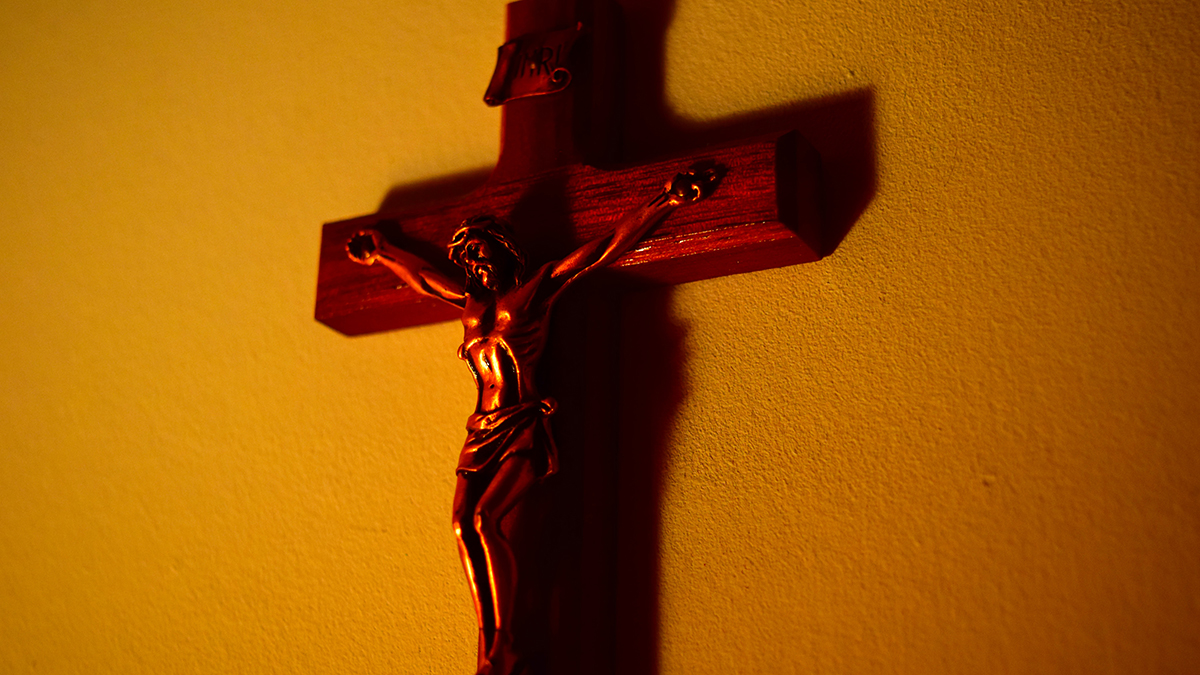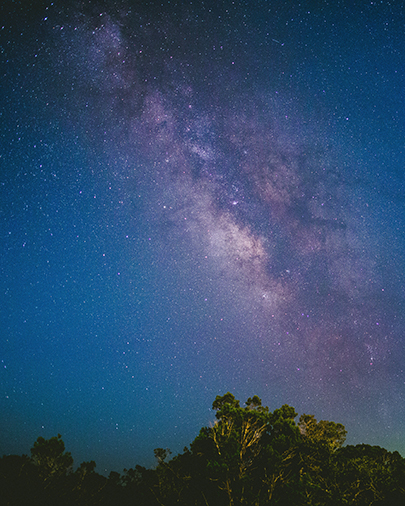
By Elaine M. Prevallet, SL
About fifty years ago, when I was a pious young nun, I went into the chapel at Loretto and knelt in the back row. I closed my eyes and prayed from deep in my heart, “O God, I long to see your face.” I don’t know how long I stayed there, but at some moment I opened my eyes and looked right smack into the face of Jesus on the large crucifix at the front of the church. “Oh well, never mind,” I said to God, and closed my eyes again. That moment has repeated itself many times, not only in my memory, but also in my life. My instinct is to close my eyes, to avoid pain, suffering, and violence—figuratively and often literally.
Now I wonder why—when so many other moments have disappeared from my memory—the feeling of that moment, when I closed my eyes to the crucifix, comes back with such compelling immediacy. I wonder if that moment was, perhaps, just the beginning of a deeper internalizing of the connection between that crucifix and my own life; a growing consciousness that a spiritual seed planted early in my life was taking deeper root within me. Maybe that moment was the real beginning of my lifelong journey to follow the path of the life, death, and resurrection of Jesus.
Without my knowing it, the gospel has been slowly revealing to me a deep truth of my/our human life. The saving grace of the cross comes not only through the suffering of Jesus, but also through the experience of suffering in our own lives and through the pain and suffering of others. The gospel calls me to seek, to hope, to learn, to see the face of God in the face of a wounded and wounding humanity, and to allow compassion to draw me more deeply into participation in the dying and rising of Jesus in and with the whole creation. Slowly, over the course of my life, I began to sense God’s ongoing, life-giving presence in the whole creation.
How is it that sometimes subtly, sometimes with a sudden startle, God breaks through the thick fog of our collective blindness? Our lives confront us with the inevitable experience of suffering: our own suffering, the suffering we cause to others, the pain we experience in and with the suffering of others. “Pay attention,” says the voice of God within us, “Here is an opportunity to deepen your relationship with me! You will find me when your heart breaks open with compassionate love for all of creation. But you must let the suffering touch you deeply enough that you begin to see your own path as a path of compassion on behalf of all living creatures.”
One of the advantages of growing older is that it is easier to look back on one’s life to appreciate and affirm all that has transpired, and to recognize that a deep wisdom seems to have been very subtly guiding the whole process. Sometimes, looking back, I can see that if I hadn’t made one seemingly catastrophic move, I never would have met one of my cherished lifelong friends. Because I went through that difficult experience in my own life, I understand more clearly what others are going through who find themselves in similar circumstances, and I can love them more compassionately because I have been there. Maybe the death of someone I loved dearly has deepened my capacity for compassion with painful grief, or a troubling snag in a relationship has heightened my sensitivity to the importance and possibility of reconciliation. Or perhaps some life-threatening situation turns out to have been a blessing because it gave me a completely renewed zest and intensity for appreciating life.
God breaks through the thick fog of our collective blindness
I believe such experiences may commonly arise in our paths, and, if we pause long enough to internalize their meaning, we find that they reveal to us wisdom, operating at a deep level of our being, leading us where we need to go, teaching us what we need to learn. If we pay attention, our ordinary life experience will give us cues that can take us deeper into the ways God works in our lives. While I do not believe that there is a predetermined program for our lives, I believe there is a path. The path arises only as we walk, yet there is a pattern to it. It’s right there in the life, death, and resurrection of Jesus: The one who is willing to lose his or her life will save it. The grain of wheat must die; then it will bring forth fruit. Don’t be afraid; I am with you.1 We are not passive; our lives are making the path.
Because it is often by looking back that we can see the outline of a path, it is surely a help to have some means of reflection, such as a journal, to remind us of where we have been, and how we have come through. Over the years, reading my own retreat journal reminds me that I just keep learning, over and over, that God’s wisdom working in my own life, while very mysterious, is totally trustworthy. Retrospectively I can see where God has brought me, how I have come to where I am, and I have a chance to bless it, to be grateful for all the threads, both the beautiful ones and the unpredictably divergent ones, that have been woven together to make this particular fabric that is my life. Sometimes a cue came as a whisper, sometimes a nudge, sometimes a push, but always I had to choose how to respond. I can begin to see that, all along, the whole process of my life has received a certain guidance. Mysteriously this direction seems to be orchestrated both from beyond myself and from deep within myself, with a holy wisdom. The pattern is detectable: Our dyings—in the small daily acts of selflessness, as well as in our final “passing over”—can and will yield new life for ourselves and others. The pattern is all about careful attentiveness to our own experience, listening for this guidance, and learning to trust.

“In a dark time, the eye begins to see.”2 This line, from a poem by Theodore Roethke, has been a companion to me for many years. Sometimes at night I stand on my porch in the darkness and wait for the shapes to reveal themselves. And they do, slowly, shadow by shadow. The trees etch their contours against the black background of sky while stars keep emerging, one by one. Roethke’s line brings an inward comfort to me, offering assurance that darkness has its own way of clarifying vision. I cannot stop longing to see. I cannot stop wanting to know with my whole being the presence of God everywhere on this beautiful, fragile planet of ours, and everywhere in the whole cosmos! Awareness of the deep mysteries of cosmic time and space has only deepened the silence out of which I want to speak, to celebrate how miraculously we live and move and have our being. I understand that God must always be obscure, a horizon that is always beckoning, drawing our eyes forward. And at some point in my life, I began to love that darkness, to love in that darkness the God I cannot see. “Thou whom I do not know, but whose I am.”3 These words of Dag Hammarskjöld took hold in my soul.
But what about my life in this concrete world of every day? Where and how can I know what steps to take to move forward toward what I cannot even name? “Show me your way, guide me in your truth, send out your light and your truth.” The psalms are full of such pleas to God from human hearts aching to find their way, their peace. How do we discern God’s way in the world around us?
That question becomes increasingly poignant as we perceive ourselves to be living in dark times. To some extent, the perception of dark times may seem especially threatening to us in the U.S., accustomed as we are to a culture of comfort and security, however false and transitory that security may prove to be. Have we become so accustomed to the presence of war, torture, violence, death penalties, abortions, huge gaps between rich and poor in our culture—accustomed, that is, to a culture of death—that we cannot see that their presence in our life-blood is toxic? Maybe we don’t stop to recognize that, “for the time being,” we are all on the planet together. All of life’s species share this space with one another, but might the light be trying to shine through so much darkness?
I believe that we humans are just beginning to see the light, just starting to learn that if we are going to survive, we need to learn a way of more expansive love and care for one another. If we look closely, we can see the pattern emerging as God’s will. As is often true in our individual lives, in our collective lives as well we sometimes learn best when we learn the hard way: Our mistakes take us to a new level of understanding and compassion. The breakdown of so many systems, the exposed vulnerability of so many habitats and species, the recognition of physical, psychological, spiritual, and “collateral” damage—to our planet, to our human species, and to other species—might these be God’s cues, exposing our blindness to the will of God for our creation? Is light trying to reach us through the darkness, prodding us humans to change our minds and our behaviors? Can we recognize the pattern, and not close our eyes?
As we become increasingly sensitive to the pain accumulating on our planet, we may hear the voice of God calling us to pay attention and sense the Spirit of God drawing us together to a new and deeper unity through compassionate action. Maybe we who want to call ourselves Christian must look for the patterns of insensitivity in our lifestyles and behaviors. Whom do we exclude, not just from our churches but also from the ambit of our compassion? In Christ, God has shown us the way: a willingness to risk engaging the world around us with an ever-widening vision and ever-deepening compassion. In our baptism we committed ourselves to be faithful to that pattern. Can we keep our eyes, and our ears and our hands and hearts open?
From “With Open Eyes: Discerning the Pattern of God’s Presence” by Elaine M. Prevallet, SL. Originally published in Weavings: A Journal of the Christian Spiritual Life, May/June/July 2010), Vol. 25, No. 3. Copyright © 2010 The Upper Room.
Notes:
Share on Socials